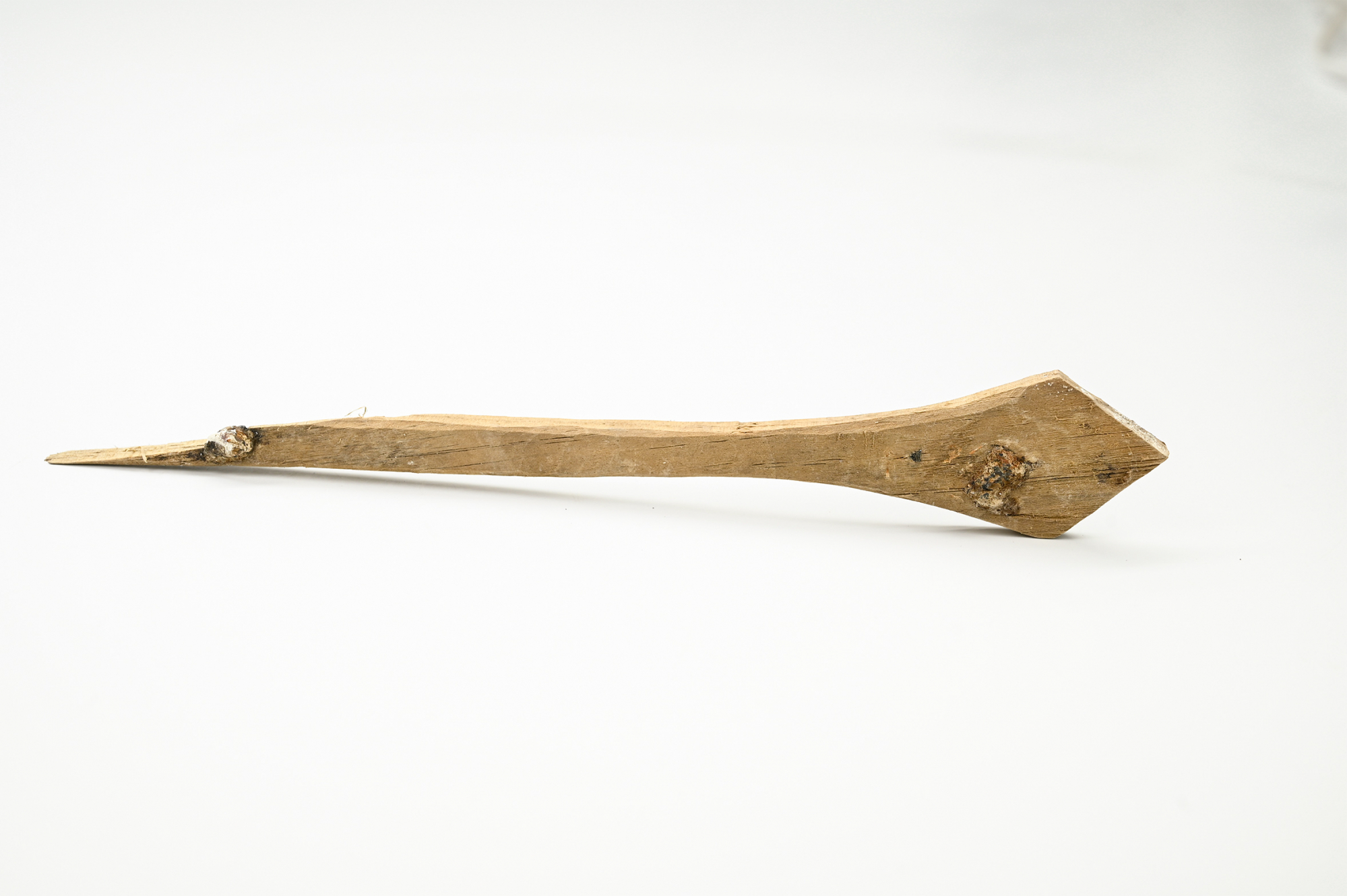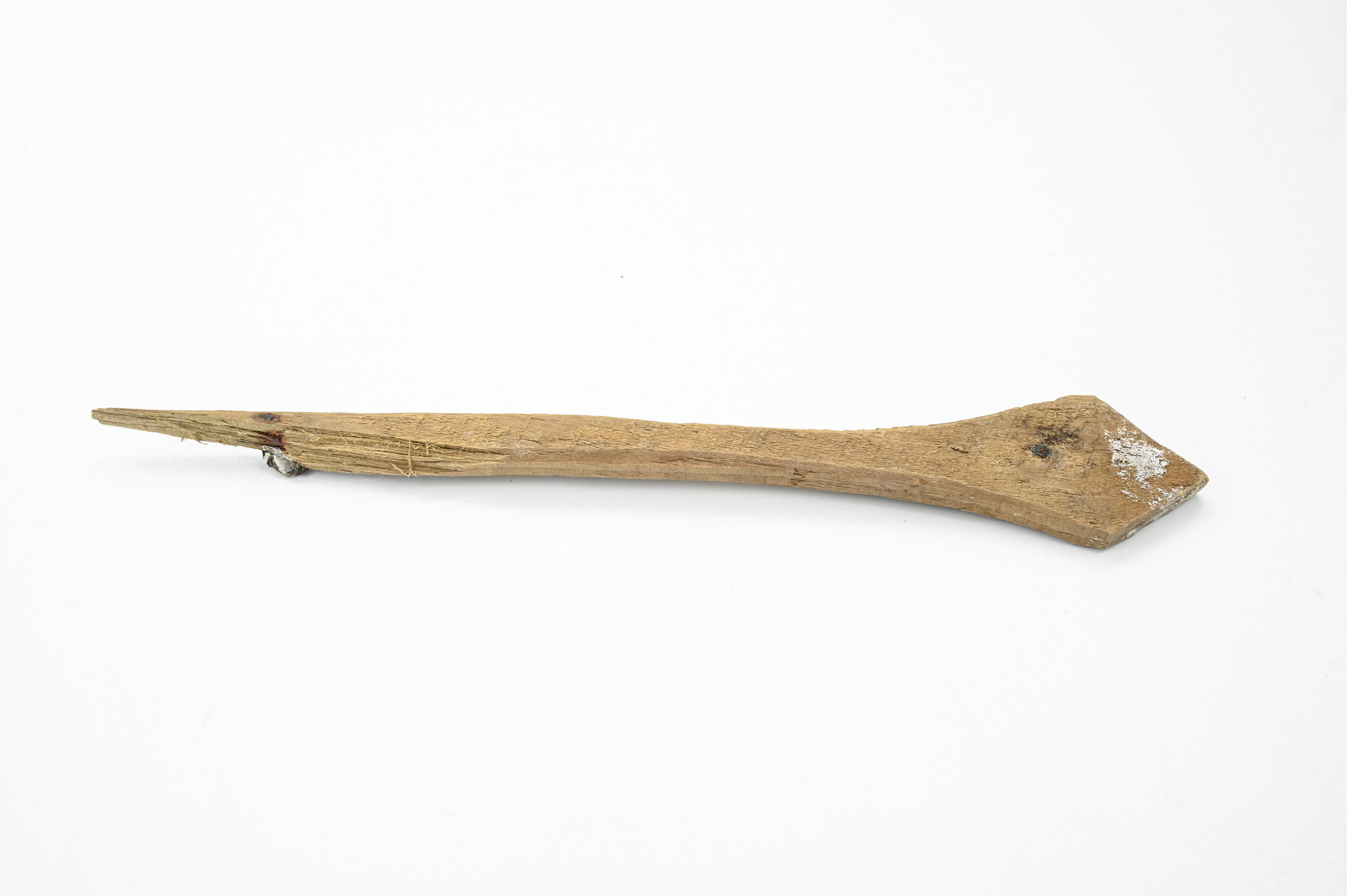site search
online catalog
CARVED WOOD FROM FORT PEMBINA

Hover to zoom


$15.00
Quantity Available: 1
Item Code: 1052-637
Shipping: Determined by Method & Location of buyer
To Order:
Call 717-334-0347,
Fax 717-334-5016, or E-mail
At least one other similarly shaped piece of wood has come from the excavations at Fort Pembina, near the Red River in North Dakota. At first sight we guessed it was a wood arrow carved as for use as a toy, but both examples show a small nail in the diamond shaped tip indicated it was fixed to something, though what and for what purpose is still open. This comes from excavations at Fort Pembina, ND, made on private property with the owner’s permission, that have yielded a wealth of material in surprisingly good shape from the anaerobic conditions of the dig. Some relates to the military functions of the post, and other material reflects more the day-to-day life in a small garrison on the frontier.
Fort Pembina was established in 1870 by troops of the 20th US Infantry. Situated in the Red River Valley in North Dakota near the Canadian border, Ft. Pembina was in operation until 1895. Trading posts existed earlier in the area as part of the fur trade, and the first U.S. military post there was temporary- manned by a detachment of Minnesota troops in 1863-1864 following the 1862 Sioux uprising. In March 1870 a new fort was established south of the Pembina River and about 200 yards west of the Red River, completed by July and named in honor of Gen. George H. Thomas. The name was changed to Fort Pembina in September and the initial garrison consisted of two companies of the 20th US Infantry. Their main purpose was to provide security for settlers worried about Sioux returning south from Canada, but the troops spent much of their time escorting boundary surveys along the Canadian border and preventing Fenian raids heading north into Canada.
The fort included enlisted barracks, officers’ quarters, guard house, ordnance storehouse, company kitchen, root house, laundress’s quarters, quarters for civilian employees, hospital and hospital servant’s house, a barn for the “hospital cow,” quartermaster and commissary offices and storehouse, stables, wagon shed, etc. The garrison reached peak strength in 1878 of 200, but the average was about 125 enlisted men and 8 officers. An October 1885 return listed 97 men, 2 field pieces, 1 mountain howitzer, 100 rifles, 19 pistols, 23 mules, and 9 wagons. By 1890 the post had just 23 men, and after an 1895 fire destroyed some 19 buildings it was decided to abandon the fort rather than rebuild, the last detachment left in September. The property was turned over to the Interior Department and later sold in 1902. [sr] [ph:m]
~~~~~~~~~~~~~~~~~~~~~~~~~~~~~~~~~~~
THIS ITEM, AS WITH ALL OTHER ITEMS AVAILABLE ON OUR WEB SITE,
MAY BE PURCHASED THROUGH OUR LAYAWAY PROGRAM.
CLICK HERE FOR OUR POLICIES AND TERMS.
THANK YOU!
Inquire About CARVED WOOD FROM FORT PEMBINA
Most Popular
Historical Firearms Stolen From The National Civil War Museum In Harrisburg, Pa »
Theft From Gravesite Of Gen. John Reynolds »
Selection Of Unframed Prints By Don Troiani »
Fine Condition Brass Infantry Bugle Insignia »
Large English Bowie Knife With Sheath 1870’S – 1880’S »
Imported (Clauberg) Us Model 1860 Light Cavalry Officer's Saber »
featured item
DECEMBER 1862 LETTER WRITTEN BY COL. JOSHUA LAWRENCE CHAMBERLAIN TO HIS WIFE FANNY
Here we have a letter written by a man who needs no introduction, Joshua Lawrence Chamberlain. This four-page letter is written on standard 8.5 inch by 11 inch unlined paper. In period ink, Chamberlain writes to his wife, Fanny, from the camp of the… (557-250B). Learn More »


